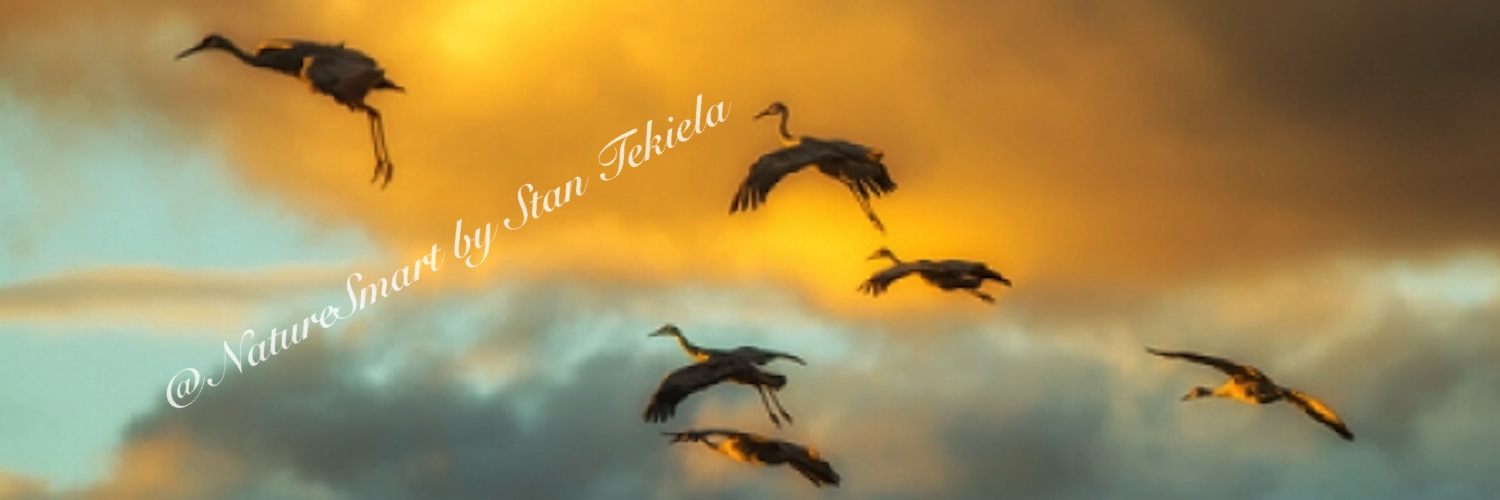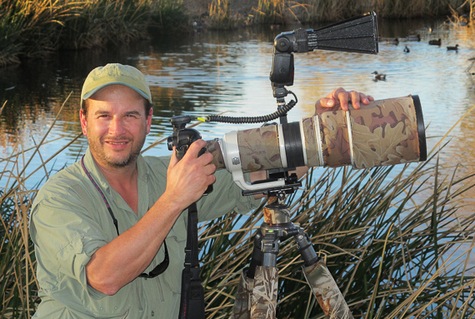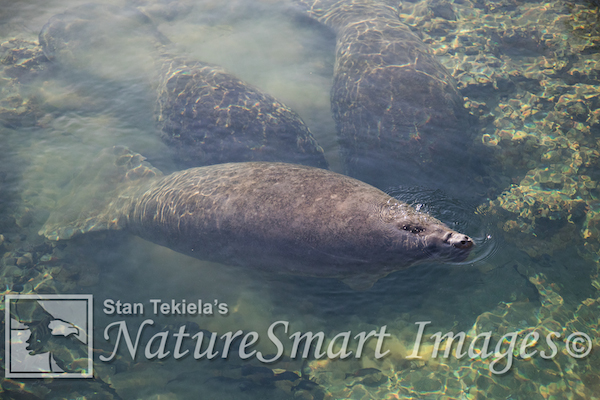
Manatees, Florida’s Gentle Giants
In today’s post, naturalist and wildlife photographer Stan Tekiela shares with us his knowledge of Manatees, Florida’s gentle giants.
I am continuing with my exploration of the wonders of Florida by taking a closer look at the Florida Manatee. Also known as the West Indian Manatee (Trichechus manatus latirostris) or the Sea Cow, the manatee was one of the original 78 species that were included on the Endangered Species list when the Endangered Species Preservation Act was first passed into law in 1966.

The Florida Manatee is one of two subspecies of the West Indian Manatee. The other subspecies is the Antillean Manatee, which occurs from Brazil to Mexico. The Florida Manatee is found along the Atlantic coast from the Carolinas, Georgia, and Florida, and also in the Gulf of Mexico from Florida to Texas. However, the main concentration is found in and around Florida.
Manatees are large marine mammals, with adults weighting on average 1,000 pounds, with some as much as 1,500 lbs. They have an average length of 12 to 14 feet. Like elephants, they continue to grow throughout their lives; the largest manatee ever recorded was 13 feet 4 inches and weighed more than 3,200 lbs. When you first see one of these animals in person, up close, you realize just how massive they are.
These large aquatic mammals are gray and sparsely covered with hair. They have large forelimbs, which are better described as flippers, and they have no hind limbs. They do have a large, wide tail used for swimming; when you see them swimming, they look like they are in extreme slow motion. They have tiny eyes but can see very well; although they don’t have any external ear openings, they do hear very well. They have flat valves that cover their nostrils when underwater. Being air-breathing animals, manatees need to surface every 3-5 minutes to breathe, but they can remain submerged for up to 15 minutes if necessary.
These gentle giants spend most of their day sleeping and feeding on aquatic plants. They consume about 150 pounds of vegetation each day, using their eyesight to find the food.

Florida Manatee taken in central Forida in the wild
Female manatees become sexually mature at 4-5 years of age. Mothers give birth to a single calf once every two to five years. Only rarely do they have twins. Calves weigh about 75 to 90 pounds upon birth and are more than 6 feet long. Because these are marine mammals, the calves suckle milk from their mothers for the first 5-6 months and start eating aquatic vegetation at 3-5 months. Most calves stay with their mothers for up to 2 years before moving out on their own. During this time, the calves learn what kinds of plants are good to eat, where the warm water refuges are located, and the migratory route from their mothers.
Today there are about 6,300 manatees in Florida. This is up from a low of about 1,200 about 25 years ago. They are still on the endangered species list; however, due to improved protection and reduction in direct threats to their habitat, they are now recommended to be moved to the Threatened Species list.
I’m always drawn to writing stories about endangered species. And I have always felt that education is the key to helping to save wildlife from extinction. I have dedicated my entire career, over 30 years, to environmental education, in the hopes that, as our society becomes educated about wildlife, we can make better decisions to save our planet and all the wildlife that it holds. It warms my heart to see such a magnificent animal doing much better than the first time I saw one back in the 1970s.
The next time you are in Florida, it would be well worth your time and effort to see these magnificence marine mammals.
If you enjoyed Stan’s post, you may consider one of his amazing nature books: Majestic Eagles; The Lives of Wolves, Coyotes, and Foxes; or Backyard Birds: Welcomed Guests at our Gardens and Feeders. Young readers will delight in his award-winning children’s books, such as Whose Butt?, Critter Litter, and his latest, Jump, Little Wood Ducks.
You can follow Stan on Facebook and Twitter, or contact him via his web page. Stan’s nationally syndicated NatureSmart Column appears in more than 25 cities spanning 5 states (Minnesota, Wisconsin, Michigan, Illinois, and Pennsylvania) and is circulated to more than 750,000 readers. Stan’s author page on Amazon features some amazing videos! Check them out, and follow him for updates.
For more stories about wildlife and nature, sign up for our newsletter now!
More posts from Stan:
Indigo Bunting—A Familiar Summer Visitor
The Nesting Behaviors of Sandhill Cranes
Big Birds, Baby Birds, Birds Everywhere
Stan Tekiela observes Marsh Wrens
The Magical, Mystical World of Sandhill Cranes


